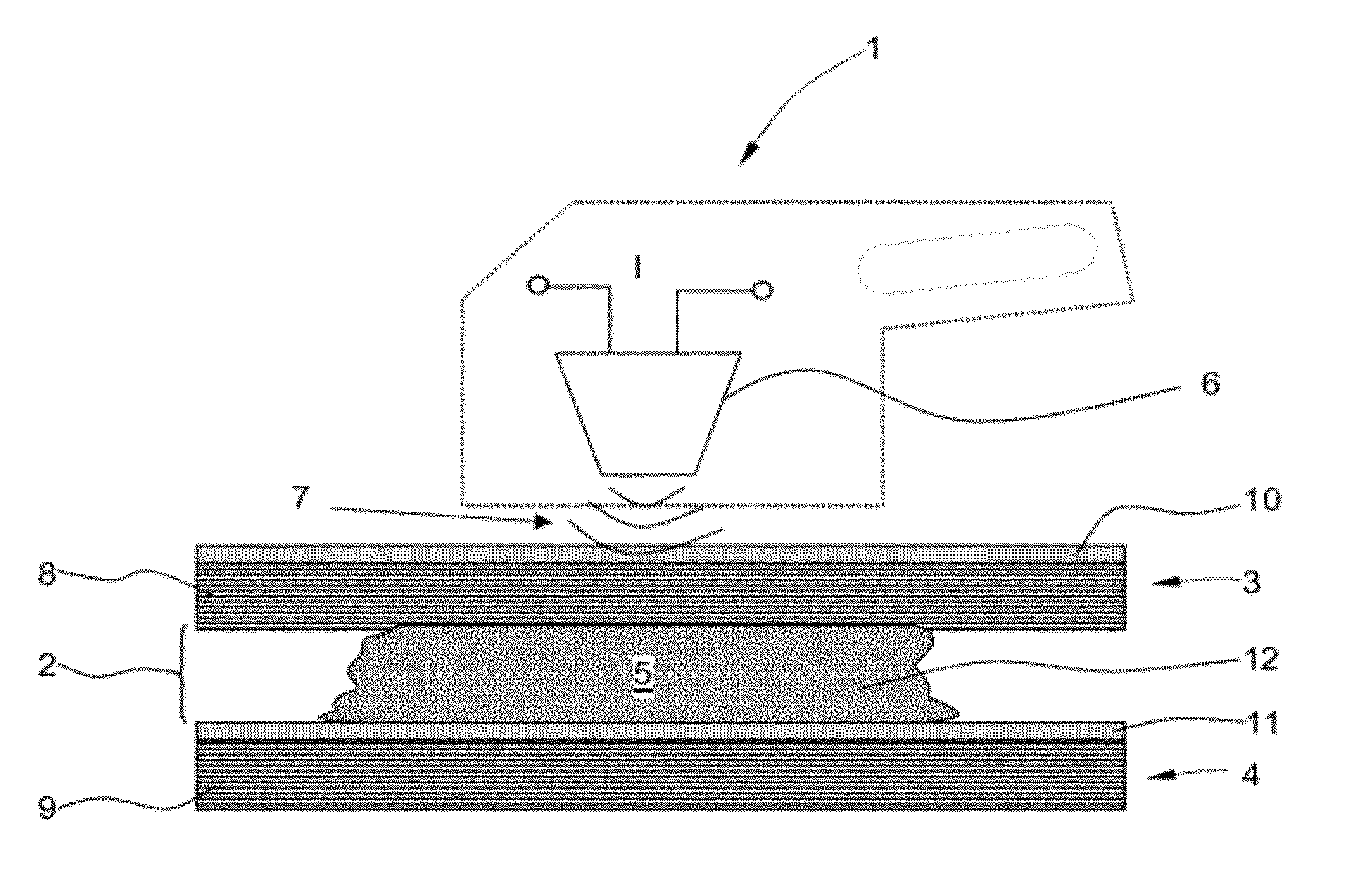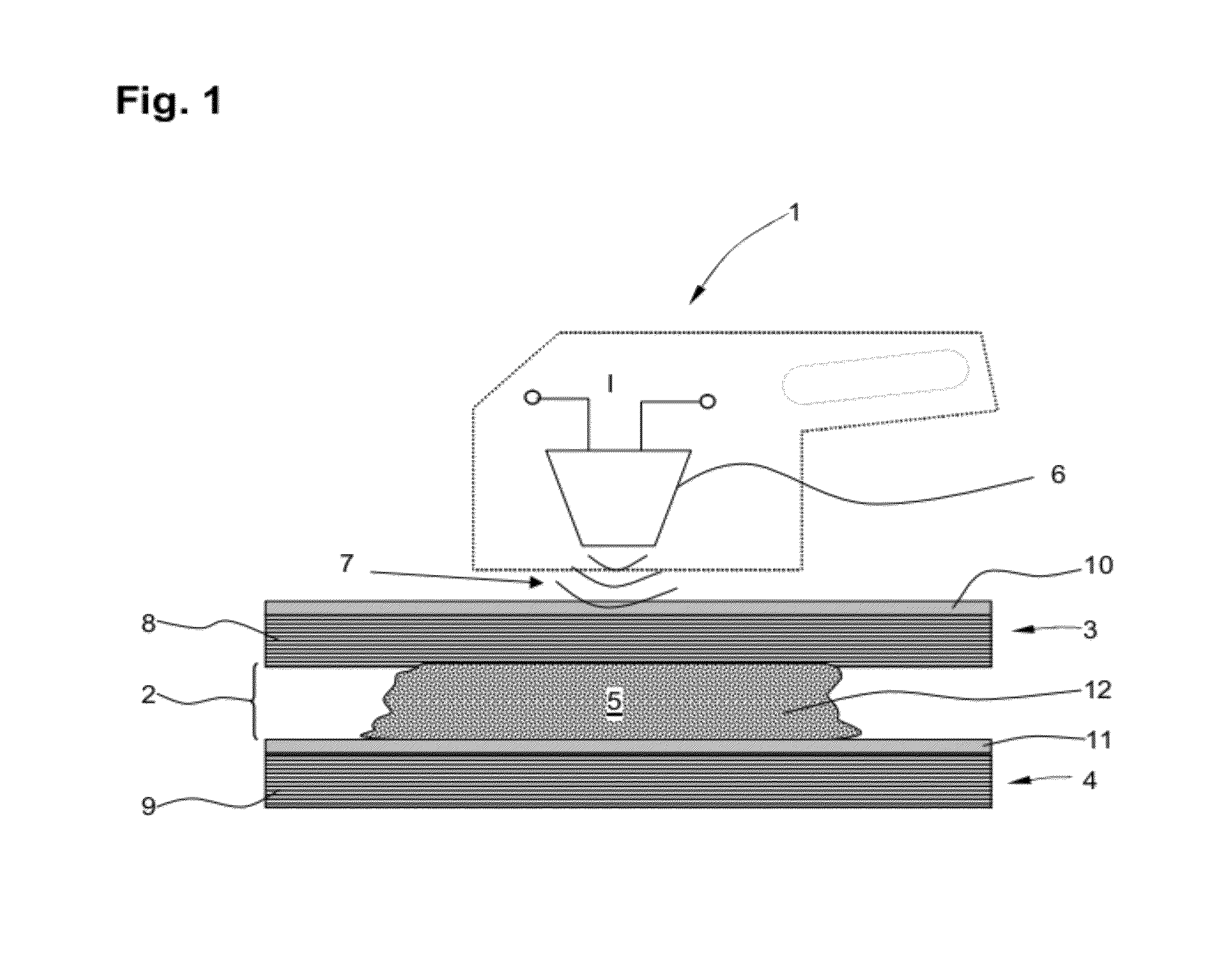Method and device for joining components
a technology of components and components, applied in the field of joining components, can solve the problem that the effect of heat can be limited accurately in time, and achieve the effect of rapid, precise and controllable manner
- Summary
- Abstract
- Description
- Claims
- Application Information
AI Technical Summary
Benefits of technology
Problems solved by technology
Method used
Image
Examples
embodiment 1
[0047]A Method for joining a first and a second component, at least one of which comprises a fibre-reinforced plastics material, comprising the following steps: arranging the components in relation to one another, leaving a gap region between the first and the second component; filling the gap region, at least in portions, with an uncured plastics material filler in which nanoparticles are dispersed; and introducing energy locally into the nanoparticles in order to cure the plastics material filler.
embodiment 2
[0048]The method according to embodiment 1, wherein the gap region has a width of from 0.3 mm to 2 mm.
embodiment 3
[0049]The method according to either embodiment 1 or embodiment 2, wherein a step of heating the plastics material filler by the local introduction of energy, in particular to between 40° C. and 90° C., in order to cure the plastics material filler is provided.
PUM
| Property | Measurement | Unit |
|---|---|---|
| width | aaaaa | aaaaa |
| diameter | aaaaa | aaaaa |
| time | aaaaa | aaaaa |
Abstract
Description
Claims
Application Information
 Login to View More
Login to View More - R&D
- Intellectual Property
- Life Sciences
- Materials
- Tech Scout
- Unparalleled Data Quality
- Higher Quality Content
- 60% Fewer Hallucinations
Browse by: Latest US Patents, China's latest patents, Technical Efficacy Thesaurus, Application Domain, Technology Topic, Popular Technical Reports.
© 2025 PatSnap. All rights reserved.Legal|Privacy policy|Modern Slavery Act Transparency Statement|Sitemap|About US| Contact US: help@patsnap.com



